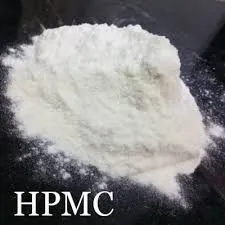
sept. . 17, 2024 05:30 Back to list
Hydroxypropyl Methyl Cellulose (HPMC) Safety Data Sheet - MSDS Information
Hydroxypropyl Methyl Cellulose (HPMC) – Safety Data Overview
Hydroxypropyl Methyl Cellulose (HPMC) is a cellulose derivative widely used in various industries, including pharmaceuticals, food, construction, and cosmetics. As with any chemical substance, it is essential to consider safety and handling measures when working with HPMC. This article provides an overview based on its Material Safety Data Sheet (MSDS).
Chemical Identity and Properties
HPMC is a non-ionic, water-soluble polymer derived from cellulose. It appears as a white to off-white powder, characterized by its thickening, emulsifying, and film-forming properties. Due to its versatility, it is often used as a binder in tablets, a thickener in sauces, and as a stabilizer in cosmetics.
Health Hazards
According to the MSDS, HPMC is generally regarded as safe for use in food and pharmaceutical applications. However, exposure to dust may cause respiratory irritation, and prolonged skin contact may lead to mild irritation. It is crucial to utilize appropriate personal protective equipment (PPE), such as gloves and masks, when handling HPMC to minimize exposure risks.
First Aid Measures
hydroxypropyl methyl cellulose msds

In case of accidental exposure, the MSDS outlines specific first aid measures. If inhaled, it is advised to move the individual to an area with fresh air and seek medical attention if symptoms persist. For skin contact, washing the affected area with soap and water is recommended. If eye contact occurs, rinsing eyes with plenty of water for at least 15 minutes is necessary, and medical attention should be sought if irritation persists.
Handling and Storage
HPMC should be stored in a cool, dry place, away from direct sunlight and incompatible substances. The MSDS recommends using sealed containers to avoid moisture absorption and contamination. Proper ventilation in the storage area is also essential to prevent the accumulation of dust.
Disposal Considerations
When disposing of HPMC, local regulations and environmental guidelines should be adhered to. It is generally considered non-hazardous waste; however, any packaging material should be disposed of according to local waste management practices.
Conclusion
Hydroxypropyl Methyl Cellulose is a versatile and valuable compound across various industries, but it is crucial to follow safety guidelines outlined in its MSDS. By understanding and implementing proper handling, storage, and disposal practices, users can ensure their safety and that of the environment while benefiting from the unique properties of HPMC.
-
The Ultimate Guide to Mortar Bonding Agent
NewsAug.06,2025
-
Redispersible Powder: The Ultimate Solution for Modern Construction Needs
NewsAug.06,2025
-
HPMC: Unlocking Versatility in Industrial Applications
NewsAug.06,2025
-
HPMC: Revolutionizing the Industry with Superior Formulations
NewsAug.06,2025
-
Discover the Power of Redispersible Polymer Powder
NewsAug.06,2025
-
All You Need to Know About Mortar RDP
NewsAug.06,2025







